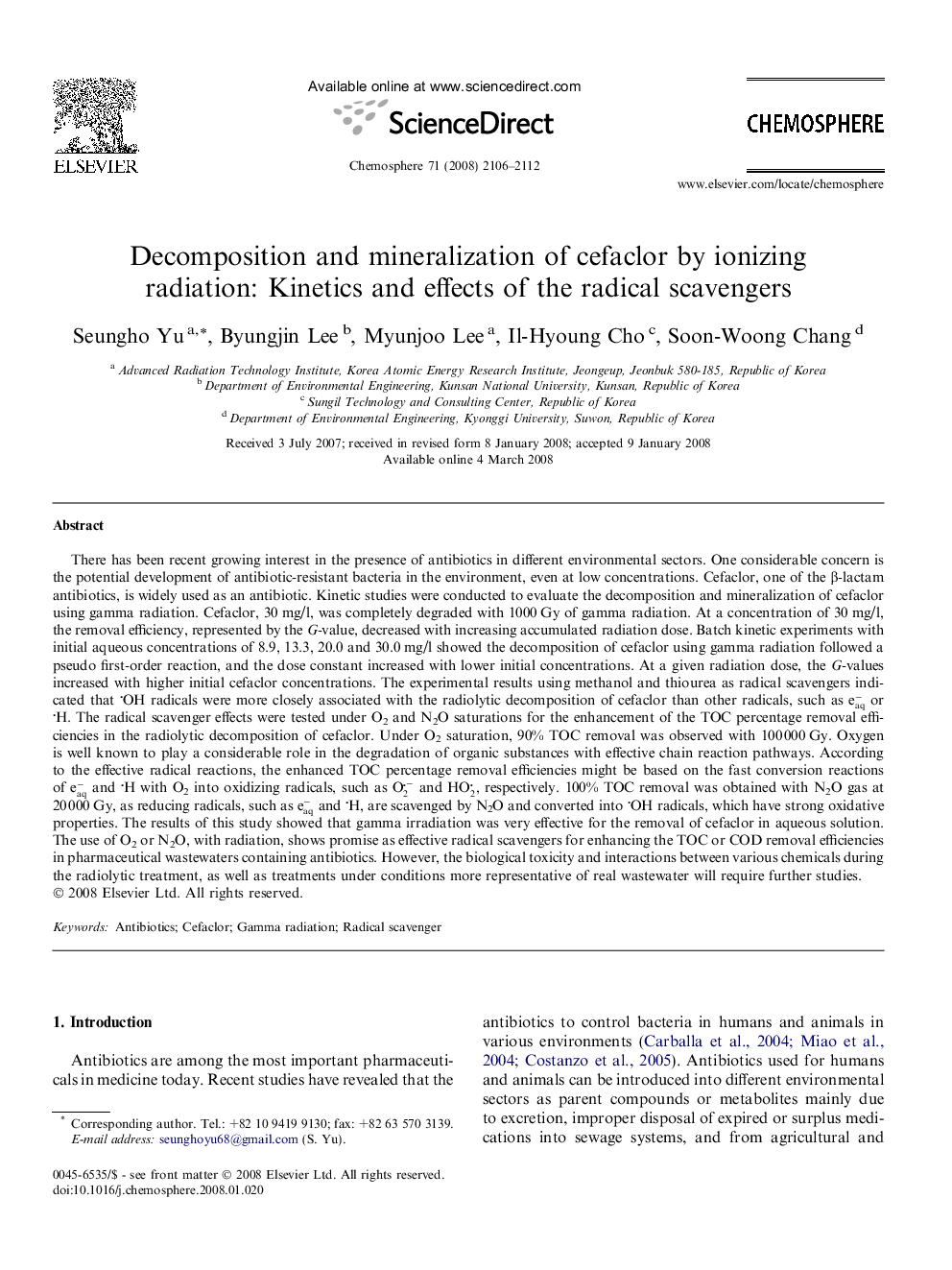| کد مقاله | کد نشریه | سال انتشار | مقاله انگلیسی | نسخه تمام متن |
|---|---|---|---|---|
| 4413704 | 1307687 | 2008 | 7 صفحه PDF | دانلود رایگان |

There has been recent growing interest in the presence of antibiotics in different environmental sectors. One considerable concern is the potential development of antibiotic-resistant bacteria in the environment, even at low concentrations. Cefaclor, one of the β-lactam antibiotics, is widely used as an antibiotic. Kinetic studies were conducted to evaluate the decomposition and mineralization of cefaclor using gamma radiation. Cefaclor, 30 mg/l, was completely degraded with 1000 Gy of gamma radiation. At a concentration of 30 mg/l, the removal efficiency, represented by the G-value, decreased with increasing accumulated radiation dose. Batch kinetic experiments with initial aqueous concentrations of 8.9, 13.3, 20.0 and 30.0 mg/l showed the decomposition of cefaclor using gamma radiation followed a pseudo first-order reaction, and the dose constant increased with lower initial concentrations. At a given radiation dose, the G-values increased with higher initial cefaclor concentrations. The experimental results using methanol and thiourea as radical scavengers indicated that OH radicals were more closely associated with the radiolytic decomposition of cefaclor than other radicals, such as eaq- or H. The radical scavenger effects were tested under O2 and N2O saturations for the enhancement of the TOC percentage removal efficiencies in the radiolytic decomposition of cefaclor. Under O2 saturation, 90% TOC removal was observed with 100 000 Gy. Oxygen is well known to play a considerable role in the degradation of organic substances with effective chain reaction pathways. According to the effective radical reactions, the enhanced TOC percentage removal efficiencies might be based on the fast conversion reactions of eaq- and H with O2 into oxidizing radicals, such as O2- and HO2, respectively. 100% TOC removal was obtained with N2O gas at 20 000 Gy, as reducing radicals, such as eaq- and H, are scavenged by N2O and converted into OH radicals, which have strong oxidative properties. The results of this study showed that gamma irradiation was very effective for the removal of cefaclor in aqueous solution. The use of O2 or N2O, with radiation, shows promise as effective radical scavengers for enhancing the TOC or COD removal efficiencies in pharmaceutical wastewaters containing antibiotics. However, the biological toxicity and interactions between various chemicals during the radiolytic treatment, as well as treatments under conditions more representative of real wastewater will require further studies.
Journal: Chemosphere - Volume 71, Issue 11, May 2008, Pages 2106–2112